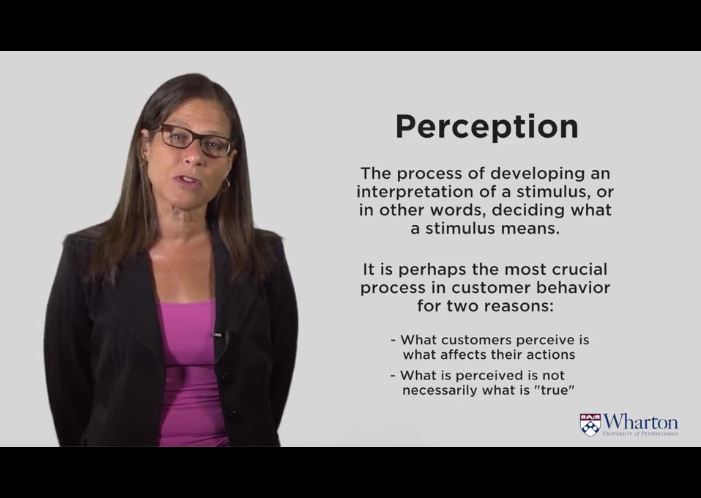Its week 3 and we’re having a quiz! I feel scared and excited at the same time. This is Professor Kahn’s final module and she discussed about effective brand communications strategies and repositioning strategies.
Now, sharing with you my notes below.
Perception
– the process of developing an interpretation of a stimulus, or in other words, deciding what a stimulus means.
Most Critical in Consumer Behavior because:
1. Their Perception affects their actions
2. Their perception is not necesarily “true”
Process of Perception
Perception is constructive.
Meanings are based on 2 major factors:
1. “actual” stimulus or event: Exposure and Attention
2. Prior expectations and what we know (perceptual interpretation)
Overview of Perceptual Process
1. Sensory Inputs
2. Exposure
3. Attention
4. Interpretation
Perceptual Organization
– Proximity
– Similarity
Elements of a Brand
Can be chosen to enhance brand awareness or facilitate the formation of strong, favorable and unique brand associations.
1. Brand Name
2. Logo
3. Symbol
4. Character
5. Packaging
6. Slogan
7. Color
Qs on Brand Elements (BE):
– How well should the BE work together to provide an identity for the product/service?
– What would customers think about the product if they only saw the brand elements?
Brand Element Choice Criteria
– Memorable
– Meaningful
– Appealing
– Protectable
– Adaptable
– Transferable
Effect of Brand Names
– Consumers likelihood of purchase
– Employees morale and productivity
– Firms limited opportunities
– investors subconscious judgement about the companys merits/strength
Tagline Basics
– short
– differentiated from competition
– unique
– easy to say and remember
– not have any negativr connotations
– can be protected and trademarked
– evokes emotional response
Types of Tagline
– Imperative
– Descriptive
– Superlative
– Provocative
– Clever
Packaging
– can influence at the point of purchase
– have continuing influence at the point of consumption
Packaging Multiple Objectives:
– identify
– present information
– protect and allow transportation
– store
– aid consumption
Persuasion
– active attempt to change belief and attitude
A. Elaboration Likelihood Model
Two Routes to Persuasion
1. Systematic (central)
2. Superficial (peripheral) processing
Peripheral Cues
– Classical conditioning
– Reciprocity: you owe me
– Consistency: we’ve always done it that way
– Social proof: everybody’s doing it
– Liking: love me, love my ideas
– Authority: just because i say so
– Scarcity: quick, before they’re all gone
B. Use of Celebrity Spokesperson Model
What makes a good celebrity endorser?
General Considerations
– celebrity/audience fit
– celebrity/brand fit
– celebrity attractiveness
– practical considerations (cost, exposure, risk, etc)
– social network
High Q-Rating
– how appealing is this celebrity among those who do know him/her?
“Transfer of Meaning” Model
Celebrities = individuals with detailed and powerful meanings
Source Models
– credibility
– attractiveness (familiarity, likability and similarity)

